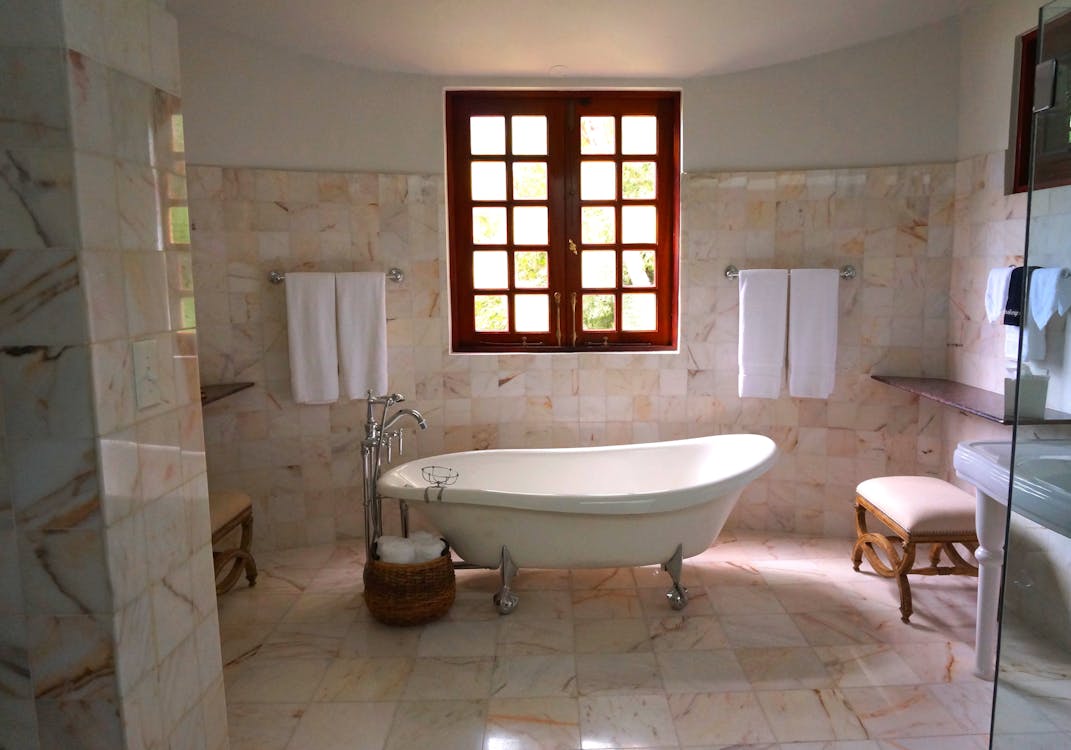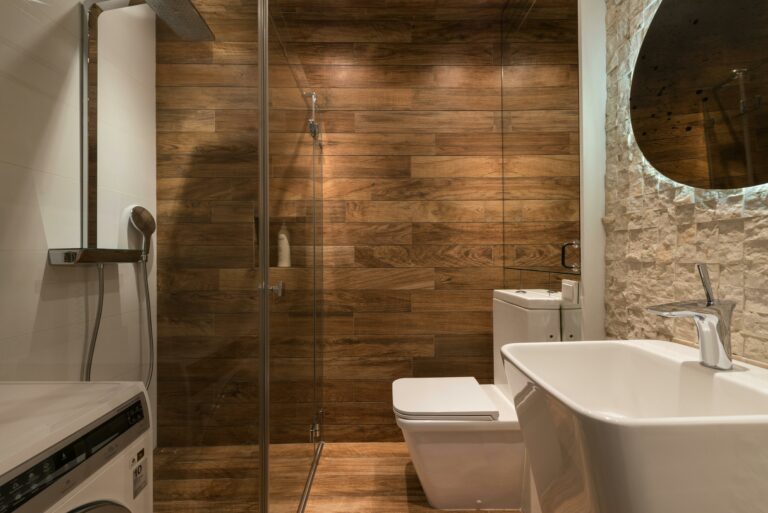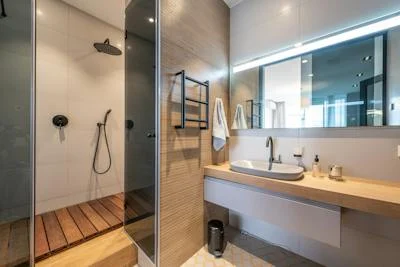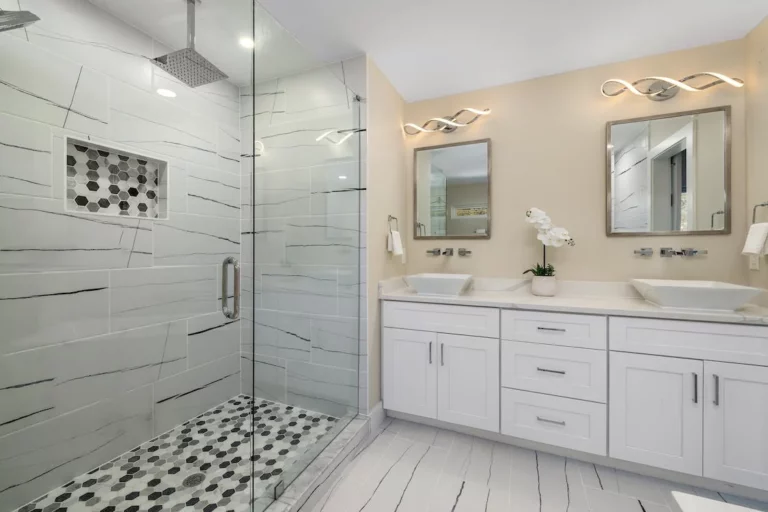The Art of Choosing a Bathtub for Your Bathroom
Choosing a bathtub for your bathroom may seem like a simple task, but with the wide variety of options available in the market today, it can quickly become overwhelming. After all, your bathtub is not just a functional fixture but also a focal point in your bathroom. It’s a place to relax and unwind, to wash away the stresses of the day. So, how do you choose the perfect bathtub that meets both your practical needs and aesthetic preferences?
This article will guide you through the art of choosing a bathtub, providing valuable insights on the current market, different types of bathtubs, factors to consider, popular variations, eco-friendly options, and additional considerations for your selection. Whether you’re remodeling your bathroom or building a new one, this comprehensive guide will help you make an informed decision that brings both comfort and style into your bathing experience. So, let’s dive in!
Table of Contents
Choosing a Bathtub for Your Bathroom
 The bathtub market is experiencing significant growth worldwide, driven by various factors such as increasing urbanization, rising disposable incomes, and the desire for luxurious and spa-like bathing experiences. Let’s take a closer look at the current state of the market, including its global growth, the specific market trends in the US, the popularity of freestanding bathtubs, and the booming bath remodeling market in North America.
The bathtub market is experiencing significant growth worldwide, driven by various factors such as increasing urbanization, rising disposable incomes, and the desire for luxurious and spa-like bathing experiences. Let’s take a closer look at the current state of the market, including its global growth, the specific market trends in the US, the popularity of freestanding bathtubs, and the booming bath remodeling market in North America.
Global Bathtub Market Growth
According to a report by Global Market Insights, the global bathtub market is projected to reach a whopping $15.10 billion by 2029, with a compound annual growth rate (CAGR) of 5.72%. This growth is attributed to the following factors:
- Rising consumer preference for relaxation and self-care activities at home.
- Technological advancements in bathtub designs and features, such as hydrotherapy options and smart functionalities.
- Increasing focus on bathroom aesthetics and customization, leading to a demand for innovative and stylish bathtubs.
US Walk-in Bathtubs Market
In the United States, the market for walk-in bathtubs is gaining significant traction. These specialized bathtubs are designed to be more accessible and safe for individuals with mobility issues or disabilities. Verified Market Research predicts that the US walk-in bathtubs market will reach $941.61 million by 2028, growing at a CAGR of 3.70%. Key factors contributing to this growth include:
- Aging population and increasing prevalence of mobility impairments.
- Growing awareness and adoption of accessible bathroom fixtures for aging-in-place initiatives.
- Government initiatives and incentives to promote home accessibility and safety.
Freestanding Bathtub Market
Freestanding bathtubs have gained immense popularity in recent years, thanks to their aesthetic appeal and versatility in bathroom design. Valuates Reports projects that the global freestanding bathtub market will touch $4,516.8 million by 2028, exhibiting a CAGR of 5.4%. The following factors are driving the growth of this segment:
- Growing demand for modern and contemporary bathroom designs.
- Freestanding bathtubs are seen as statements of luxury and elegance.
- Customization options and a wide range of materials and finishes available.
Bath Remodeling Market
The North America bath remodeling market is witnessing sustained growth as homeowners invest in upgrading their bathrooms for improved functionality and aesthetics. According to Global Market Insights, the bath remodeling market in North America is expected to grow at a rate of around 4% from 2021 to 2027. Key factors driving this growth include:
- Increased focus on sustainable and eco-friendly bathroom fixtures.
- Desire for spa-like experiences at home, leading to the installation of luxurious bathtubs and high-end shower systems.
- Rising real estate prices, encouraging homeowners to renovate and enhance the value of their properties.
In conclusion, the current bathtub market is characterized by robust growth and evolving consumer preferences. The market is witnessing significant demand for a variety of bathtub types, including walk-in bathtubs, freestanding bathtubs, and those used in bath remodeling projects. With increasing urbanization, changing preferences, and the desire for enhanced bathing experiences, the bathtub market is set to flourish in the coming years.
Types of Bathtubs

When it comes to choosing a bathtub for your bathroom, there are many options available in the market. Each type of bathtub has its own unique features and benefits. In this article, we will explore two popular types of bathtubs: acrylic bathtubs and solid surface bathtubs.
Acrylic Bathtubs
Acrylic bathtubs are a popular choice for many homeowners due to their durability, affordability, and wide range of styles.
Here are some key features of acrylic bathtubs:
- Durability: Acrylic is a highly durable material that can withstand everyday use without easily scratching or fading. This makes acrylic bathtubs a long-lasting investment for your bathroom.
- Affordability: Compared to other types of bathtubs, acrylic bathtubs are more affordable while still maintaining their quality and aesthetics. This makes them a great option for homeowners on a budget.
- Wide Range of Styles: Acrylic bathtubs come in a variety of styles, shapes, and sizes, allowing you to find the perfect bathtub that fits your bathroom’s design and meets your specific needs.
Acrylic bathtubs are a popular choice in 2024 due to their versatile nature and the range of benefits they offer. Whether you prefer a classic clawfoot tub or a sleek modern design, there is an acrylic bathtub out there to suit your taste.
Solid Surface Bathtubs
Choosing a bathtubs another popular choices is the solid surface bathtub. Solid surface materials, such as stone resin or engineered stone, offer a seamless and customizable design with excellent heat retention.
Here are some features of solid surface bathtubs:
- Seamless Design: Solid surface bathtubs are made from a composite material that allows for a seamless and smooth finish. This creates a visually appealing bathtub that can elevate the overall look of your bathroom.
- Customizable: Solid surface bathtubs can be customized to fit your specific design preferences and requirements. They can be molded into various shapes and sizes, allowing you to create a truly unique and personalized bathing experience.
- Excellent Heat Retention: Solid surface materials have excellent heat retention properties, which means that your bathwater will stay warm for a longer period of time. This adds to the comfort and relaxation of your bathing experience.
Whether you prefer the sleek and modern look of an acrylic bathtub or the seamless and customizable design of a solid surface bathtub, both options offer their own set of benefits. It ultimately comes down to your personal preferences and the style you want to achieve in your bathroom.
With a wide range of styles, durability, affordability, and customizable options, acrylic and solid surface bathtubs are excellent choices to consider when upgrading or renovating your bathroom. Regardless of the type you choose, both options provide a luxurious and relaxing bathing experience that can transform your bathroom into a spa-like retreat.
Factors to Consider When Choosing a Bathtub

When it comes to choosing a bathtub, there are several factors to consider. From the size and space requirements to the material, style, and budget, each aspect plays an important role in finding the perfect tub for your needs. Let’s take a closer look at these factors and how they can influence your decision-making process.
Size and Space Considerations
One of the first things to think about when choosing a bathtub is the available space in your bathroom. You want to make sure that the tub you choose fits comfortably and doesn’t overwhelm the room.
Here are a few points to keep in mind:
- Measure the space where the bathtub will be placed to determine the maximum dimensions you can accommodate.
- Consider any obstructions, such as doors or windows, that may affect the placement of the bathtub.
- Think about how much legroom and elbow space you prefer when bathing.
Material and Durability
The material of the bathtub is another crucial factor to consider as it affects both the aesthetic appeal and the durability of the tub.
Here are some common materials used in bathtub construction:
| Material | Characteristics |
|---|---|
| Acrylic | Lightweight, durable, and easy to clean |
| Cast Iron | Classic, sturdy, and excellent heat retention |
| Fiberglass | Cost-effective, lightweight, and easy installation |
| Stone | Luxurious, elegant, and natural |
Among these options, consider which material best suits your preferences and requirements. Some materials may require more maintenance or may be more prone to scratches or stains. Choose wisely to ensure the longevity and performance of your bathtub.
Style and Design
The style and design of the bathtub can greatly enhance the overall aesthetic of your bathroom. From traditional clawfoot tubs to modern freestanding designs, there are numerous options to choose from.
Consider the following:
- Does the bathtub’s design complement the existing decor of your bathroom?
- Do you prefer a sleek and contemporary look or a more traditional and vintage-inspired design?
- Are there any specific features or embellishments you desire, such as decorative feet or intricate patterns?
By aligning the style and design of your bathtub with your personal taste and the overall theme of your bathroom, you can create a cohesive and visually appealing space.
Features and Accessories
Beyond the basic structure and design, bathtubs can also come with a range of features and accessories to enhance your bathing experience.
Here are a few popular options to consider for choosing a bathtubs :
- Whirlpool or air jets for a soothing and therapeutic massage-like experience.
- Built-in shelves or storage compartments to keep bath essentials within easy reach.
- Inset lighting or chromotherapy options for a relaxing ambiance.
Evaluate your needs and preferences to determine which features and accessories would be beneficial for you. Keep in mind that additional features may bring additional costs, so consider your budget as well.
Budget
Last but not least, your budget plays a significant role in your bathtub selection. Set a realistic budget range before starting your search, and explore options within that range.
Here are a few tips to keep in mind for choosing a bathtubs :
- Research and compare prices from different manufacturers and retailers to find the best deals.
- Consider the long-term costs of maintenance and repairs for different materials and features.
- Don’t forget to factor in the cost of installation and any necessary plumbing adjustments.
By considering your budget, you can ensure that you find a bathtub that not only meets your needs but also aligns with your financial capabilities.
In conclusion, choosing a bathtub involves considering several factors, such as size and space requirements, material and durability, style and design, features and accessories, and budget. By carefully evaluating each aspect, you can find a bathtub that not only fits your bathroom but also meets your personal preferences and requirements. Happy tub shopping!
Also Read : Minimalist Bathroom Ideas: Creating a Spa-like Retreat in 2024
Popular Bathtub Variations

When it comes to choosing a bathtub for your home, there are a plethora of options to consider. Each variation offers its own unique features and benefits, designed to cater to different preferences and needs. In this article, we will explore some of the most popular bathtub variations on the market today.
Walk-in Bathtubs
Walk-in bathtubs have gained popularity in recent years, especially among those with mobility issues or limited mobility. These bathtubs are designed to provide a safer bathing experience by eliminating the need to step over a high bathtub wall.
Here are a few key features of walk-in bathtubs:
- Low step-in threshold: Walk-in bathtubs typically have a low step-in threshold, making it easier for individuals to enter and exit the tub.
- Built-in seating: Many walk-in bathtubs come with built-in seating options, allowing for comfortable and secure bathing.
- Grab bars and handrails: Additional safety features such as grab bars and handrails are often included in walk-in bathtubs, providing extra support during bathing.
Soaking Bathtubs
For those seeking a truly luxurious bathing experience, soaking bathtubs are an excellent choice. These bathtubs are designed to provide deep immersion and relaxation.
Here are a few reasons why soaking bathtubs are so popular:
- Deep and spacious: Soaking bathtubs are deeper and more spacious than standard bathtubs, allowing for a full-body immersion and ultimate relaxation.
- Variety of materials: Soaking bathtubs are available in a variety of materials, including acrylic, cast iron, and stone, allowing homeowners to choose the material that best suits their preferences and budget.
- Therapeutic benefits: Soaking in a bathtub has been known to have several therapeutic benefits, such as stress relief, improved circulation, and muscle relaxation.
Clawfoot Bathtubs
Clawfoot bathtubs are a timeless classic, adding a touch of elegance and charm to any bathroom. These freestanding bathtubs feature claw-shaped feet, which serve as both functional support and aesthetic appeal.
Here are a few reasons why clawfoot bathtubs are so beloved:
- Vintage appeal: Clawfoot bathtubs exude a sense of vintage elegance, reminiscent of yesteryear’s luxury bathrooms.
- Versatile placement: As freestanding units, clawfoot bathtubs offer more flexibility in terms of placement within the bathroom, allowing for a more customized and unique design.
- Durable craftsmanship: Clawfoot bathtubs are often made from high-quality materials like cast iron or acrylic, ensuring longevity and durability for years to come.
Corner Bathtubs
If space is a concern in your bathroom, corner bathtubs offer a practical and space-saving solution. These bathtubs are designed to fit snugly into the corner of the bathroom, maximizing floor space without compromising on comfort.
Here’s why corner bathtubs are so popular:
- Space-efficient design: Corner bathtubs are specifically designed to make the most of corner areas, making them perfect for smaller bathrooms or those with a limited floor area.
- Unique shape: The triangular or pentagonal shape of corner bathtubs adds a distinctive touch to the bathroom, creating a focal point and enhancing the overall aesthetics.
- Multiple seating options: Some corner bathtubs come with built-in seats or benches, allowing for a more versatile and comfortable bathing experience.
In conclusion, when choosing a bathtub, it’s important to consider your personal needs, preferences, and the available space in your bathroom. Whether you opt for a walk-in bathtub for safety, a soaking bathtub for relaxation, a clawfoot bathtub for vintage appeal, or a corner bathtub for space-saving convenience, there is a perfect option for everyone.
Eco-friendly Bathtub Options
When it comes to creating an eco-friendly bathroom, one area that often gets overlooked is the bathtub. Many people may not realize it, but traditional bathtubs can be major water wasters. Luckily, there are environmentally friendly bathtub options available that can help reduce water consumption and promote sustainability in your home.
One of the key ways to make your bathtub more eco-friendly is by installing low-flow faucets. These innovative fixtures are designed to use significantly less water than standard faucets, without sacrificing performance. By opting for a low-flow faucet in your bathtub, you can save gallons of water with each use, ultimately reducing your overall water usage.
In addition to low-flow faucets, you can also consider investing in a water-saving tub. These tubs are specifically designed to minimize water usage while still providing a relaxing and enjoyable bathing experience. They often feature innovative features like built-in insulation and smaller sizes to ensure that you use less water with each bath.
Here are some other eco-friendly bathtub options to consider:
- Recycled materials: Look for bathtubs made from recycled materials, such as reclaimed wood or recycled plastic. Not only are these options environmentally friendly, but they also add a unique touch to your bathroom design.
- Natural and non-toxic materials: Choose bathtubs that are made from natural and non-toxic materials, such as cast iron or porcelain. These materials are more sustainable and healthier for both you and the environment.
- Solar-powered heating: Consider installing a solar-powered water heating system for your bathtub. This alternative energy source can help reduce your reliance on traditional electricity and decrease your carbon footprint.
Creating an eco-friendly bathroom is not only beneficial for the environment but also for your wallet. By choosing eco-friendly bathtub options, you can save water, lower your utility bills, and contribute to a more sustainable future. So, why not start making a positive impact today by exploring the wide range of environmentally friendly bathtubs available on the market?
Explore eco-friendly bathroom products and find the perfect bathtub that aligns with your sustainability goals.
Additional Considerations for Bathtub Selection

Choosing a bathtub for your bathroom is not a decision to be taken lightly. There are several factors to consider beyond just aesthetics and size. In this section, we will discuss two essential considerations that often get overlooked – accessibility and safety, as well as maintenance and cleaning. Let’s dive in!
Accessibility and Safety
When selecting a bathtub, it’s crucial to keep accessibility and safety in mind. Here are a few things to consider:
- Step-in height: For individuals with mobility issues or disabilities, a high step-in height can be a significant obstacle. Look for bathtubs with lower step-in heights or consider installing a walk-in tub that provides easy access without the need to step over a high threshold.
- Grab bars: Installing grab bars in and around the bathtub can provide added support and stability when getting in and out. Look for bathtubs with pre-installed grab bars or ensure that there is enough space to install them.
- Slip-resistant surfaces: Bathroom accidents can happen due to slippery surfaces. Look for bathtubs with slip-resistant surfaces to reduce the risk of slips and falls. Some bathtubs come with textured bottoms or have a non-slip coating applied.
Maintenance and Cleaning
Nobody wants a bathtub that requires constant upkeep or is difficult to clean. Here are a few factors to consider for easy maintenance and cleaning:
- Material: Different bathtub materials require varying levels of maintenance. For example, acrylic and fiberglass bathtubs are relatively easy to clean and maintain, while cast iron may require more effort. Consider your lifestyle and how much time you are willing to spend on maintenance.
- Stain resistance: Look for bathtubs that are resistant to stains and discoloration. This can make your cleaning routine much more manageable. Acrylic and porcelain bathtubs tend to have good stain resistance.
- Overflow and drain design: A well-designed overflow and drain system can make a significant difference in cleaning ease. Look for bathtubs with smooth drains that are easy to access and clean.
Remember, when it comes to selecting a bathtub, it’s not just about the appearance. Considering factors like accessibility, safety, and maintenance can help you choose a bathtub that suits your needs and keeps your bathroom a safe and comfortable space for years to come.
Pro Tip: It’s always a good idea to consult with a professional or a knowledgeable salesperson when choosing a bathtub. They can provide valuable advice based on your specific needs and requirements.
Now that we’ve covered these additional considerations, you will be well-equipped to make an informed decision when selecting a bathtub for your bathroom. So go ahead, start exploring your options, and choosing a bathtubs for your bathroom to create a perfect oasis!
Conclusion
After considering the current bathtub market, exploring different types of bathtubs, and taking into account important factors such as size, material, style, features, and budget, you are now armed with the knowledge to choose the perfect bathtub for your bathroom. By understanding popular bathtub variations and considering eco-friendly options, you can further personalize your bathing experience. Additionally, keeping accessibility, safety, and maintenance in mind will ensure long-lasting satisfaction with your chosen bathtub. Whether you prefer a luxurious soaking tub, a convenient walk-in bathtub, or a stylish clawfoot or corner bathtub, there is a perfect option out there for you. Happy bathtub shopping!
To explore a wide range of bathtub options and get inspired for your bathroom remodel, visit Arkitecture Today’s website at https://arkitecture.today.
Frequently Asked Questions
- What factors should I consider when choosing a bathtub for your bathroom?When choosing a bathtub for your bathroom, consider factors such as size, style, material, installation options, functionality, and budget. Assess your bathroom space, determine the desired bathtub style that fits your aesthetic preferences, select a durable material, and ensure it matches your budget.
- What are the different types of bathtubs for your bathrooms?There are various types of bathtubs for your bathrooms, including freestanding tubs, alcove tubs, drop-in tubs, corner tubs, whirlpool tubs, and soaking tubs. Each type has its own unique features and installation requirements, so choose one that suits your needs and bathroom layout.
- Which bathtub material is the most durable?The most durable bathtub materials include cast iron, acrylic, and fiberglass. Cast iron is extremely durable but heavy, while acrylic and fiberglass offer durability along with lightweight and easy maintenance. Consider the pros and cons of each material before making a decision.
- What size of bathtub should I chooses for my bathroom?The size of the bathtub you should choose depends on the available space in your bathroom and your personal preferences. Measure your bathroom accurately and consider the layout and other fixtures to select a bathtub size that provides adequate comfort and doesn’t overcrowd the space.
- Can I install a bathtub myself or do I need professional help?While some bathtubs come with simple installation options and can be installed by a DIY enthusiast, complex installations such as freestanding tubs or those requiring plumbing modifications usually require professional help. It is advisable to consult a professional to ensure proper installation and avoid any potential issues.







